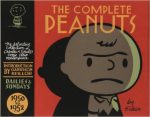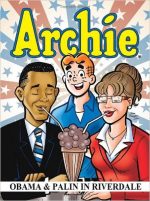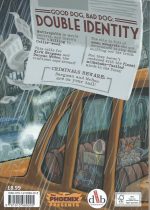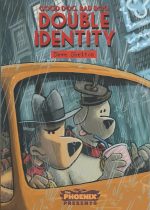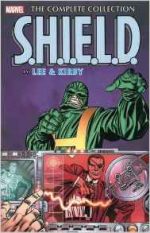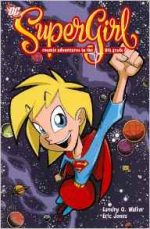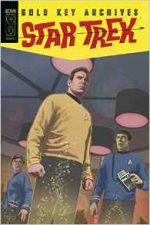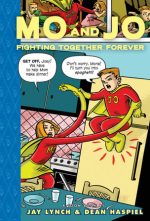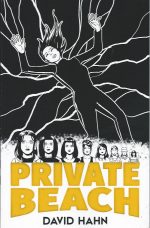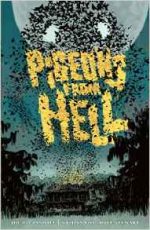
By Joe R. Lansdale, Nathan Fox & various (Dark Horse Books)
ISBN: 978-1-59582-237-6
Robert Ervin Howard is justly celebrated for his burly, barbarian sword-&-sorcery creations such as Conan, Kull, Bran Mak Morn and others, but he was a successful jobbing writer in the heyday of pulp fiction and also turned his blazing typewriter to most of the other popular genres of the era.
Moreover, as aficionados of his blistering fantasy fiction are well aware, he was a dab hand at inculcating tension, suspense and moody macabre horror.
During the too-brief time of his creative peak he crafted a number of chilling supernatural stories set in the evocative southern milieu known as ArkLaTex – a doom-shrouded, Deep South meeting-point of the darkest corners of Arkansas, Louisiana, Oklahoma and his beloved Texas.
Inspired by old stories heard at his grandmother’s knee, Howard transformed oft-told anecdotes into masterpieces of terror such as ‘The Shadow of the Beast’, ‘Moon of Zambebwie’, ‘Black Hound of Death’, ‘Black Canaan’ and the particular masterpiece under scrutiny here: a creation described by Stephen King as “one of the finest horror stories of our centuryâ€â€¦
The tirelessly prolific Howard committed suicide in 1936 and the prose Pigeons from Hell (unsold since its drafting in 1932) was published posthumously in the May 1938 edition of premier pulp Weird Tales.
It has become a classic not just of the genre but also a notional inclusion into the prestigious literary canon of the Southern Gothic movement of writers such as William Faulkner, Erskine Caldwell, Thomas Wolfe, Tennessee Williams and others.
In 1988 the original prose short story was incorporated into a stunning, lavishly painted adaptation by Scott Hampton, released by West Coast maverick publishers Eclipse, which remains one of the best graphic novels ever produced.
You should do your damnedest to track down and heartily absorb both it and the original text versions.
In 2008, Dark Horse – current holders of the license for Howard comic adaptations – approached esteemed author, occasional comics scripter and devout REH fan Joe R. Lansdale to adapt and update the story, crafting a notional sequel: first as a 4-issue miniseries and then as this sterling terror tome which is every bit as potent and gripping as the Eclipse release.
Illustrated by Nathan Fox with colours by Dave Stewart and letters from Richard Starkings & Comicraft, the story is translated to contemporary times but still centres on the desolate, dilapidated, dank and doom-laden Blassenville House and the swamp-encircled former plantation grounds it festers in.
As the sun sets a car with five forthright youngsters pulls up at the ravaged mansion deep in the Acadiana boondocks. Scaring away an army of fluttering pigeons, the deeply disappointed travellers are far from impressed with the inheritance sisters Janet and Claire have come from Texas to view.
Risking their lives on the shaky stairs the curious, disgusted kids reach the attic and find a mountain of dead birds. For all their tough talk and brave fronts the place is getting to them and their bold bravura starts to fade. Going back down, the first casualty occurs and the horrified friends head straight for the car and anywhere but here…
They don’t get far and the survivors are soon forced to return to the house where something vile and uncanny continues to pick them off…
Faced with appalling events and now certain that Grandmas’s crazy old horror stories were not just true but toned down for the kids, the Blassenville girls resolve to save who they can and then get the hell out.
They’re true believers now; having been separated from their friends and barely escaped a bloody shambling horror in the house. A vast sea of anxious spirits congregated in the fields around it also add veracity to everything the old lady once spooked them with. When these amorphous shades chase them into the sceptical arms of a local sheriff the sisters agree to go back inside but it’s not long before the lawman is also fully aware that ghosts are real and extremely dangerous…
Escorting them into the woods he takes the Blassenvilles to a crazy old witchman (he once thought…) who clues them all in on the history of the house before giving them vital clues they need to fight the thing inside and perhaps end the horror at long last…
Blending compulsive suspense with riotous splatter-action and a wry undertone of trenchant sassiness, this ferociously effective homage includes context and commentary in Lansdale’s ‘Notes from the Writer’, critique and historical background from Howard scholar Mark Finn in his ‘Afterword: The Brothers Gothic’ and a full Cover Gallery from the comic books.
Adding to the informational overload is a stunning picture-packed treasure trove as ‘The Sketchbook from Hell, with commentary from artist Nathan Fox’ reveals secrets of the creative process whilst guest artists Tomer Hanuka, Hector Casanova, Greg Ruth, Guy Davis, Paul Maybury, Jim Mahfood, Brandon Graham, David Crosland, Paul Chatem and Nathan Fox offer alternative outlooks in a copious ‘Bonus Pinups’ section.
Not only is the original prose work one of the best pieces of horror fiction ever written, but in this rare instance the follow-up – like the movie Alien and its gung-ho sequel Aliens – slips sneakily from one classic genre to another and makes both the better for it. This is a coming classic of graphic narrative; something every fright fan should see – but only with all the lights on…
Pigeons from Hell © 2008, 2009 Robert E. Howard Properties Inc. (“REHPâ€). All rights reserved.

